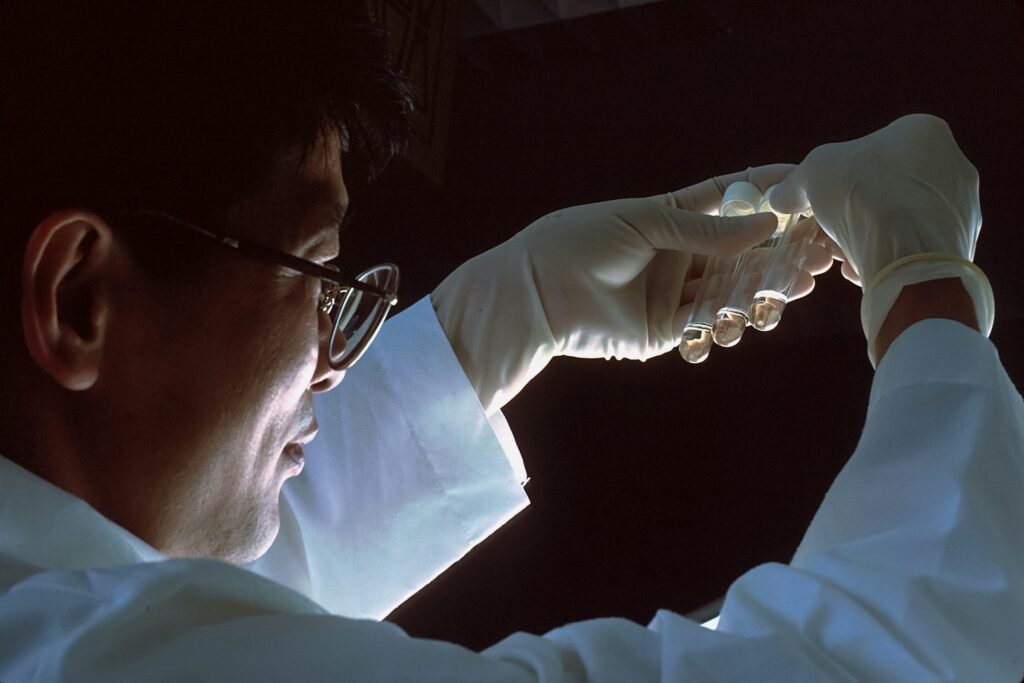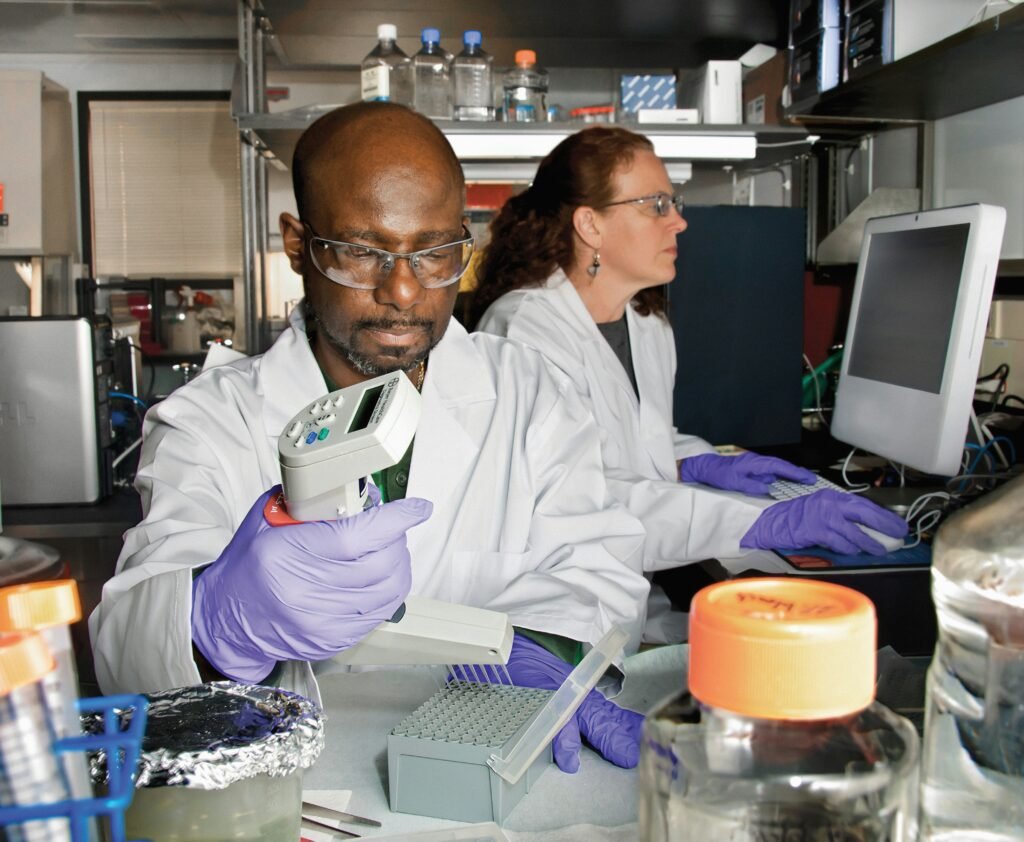Acquired Immunodeficiency Syndrome (AIDS) remains one of the most significant global public health issues. Since the epidemic began, millions of lives have been affected. With growing awareness, treatment advances, and prevention strategies, people living with HIV (the virus that causes AIDS) can now live long and healthy lives. In this post, we will go deep into what AIDS is, its symptoms, stages, how to control its spread, and where science currently stands in finding a cure for it.

What is AIDS?
AIDS (Acquired Immunodeficiency Syndrome) is the most advanced stage of HIV (Human Immunodeficiency Virus) infection. HIV attacks the body’s immune system, specifically the CD4 cells (T cells), which help the immune system fight off infections. If left untreated, HIV reduces the number of CD4 cells, making the person more vulnerable to infections or infection-related cancers.
AIDS is diagnosed when the immune system becomes severely damaged due to prolonged HIV infection, or when an individual develops certain opportunistic infections or cancers.
How is HIV Transmitted?
HIV spreads through contact with certain body fluids from a person with HIV. These fluids include:
- Blood
- Semen and pre-seminal fluid
- Vaginal and rectal fluids
- Breast milk
Common ways HIV is transmitted include:
- Unprotected sexual contact
- Sharing needles or syringes
- From mother to child during childbirth or breastfeeding
- Through contaminated blood transfusions (rare in developed countries)
Symptoms of HIV and AIDS

Early HIV Infection (Acute Stage):
This stage may occur within 2–4 weeks after exposure. Many people experience flu-like symptoms, including:
- Fever
- Chills
- Rash
- Night sweats
- Muscle aches
- Sore throat
- Fatigue
- Swollen lymph nodes
- Mouth ulcers
Some may not show any symptoms at this stage, but the virus is rapidly multiplying.
Chronic HIV (Asymptomatic or Latent Stage):
In this phase, the virus is still active but reproduces at very low levels. People may not feel sick and can remain in this stage for several years if not on treatment.
Progression to AIDS:
Without treatment, HIV can lead to AIDS. Symptoms of AIDS include:
- Rapid weight loss
- Recurring fever or profuse night sweats
- Extreme and unexplained tiredness
- Prolonged swelling of lymph glands
- Diarrhea that lasts for more than a week
- Sores in the mouth, anus, or genitals
- Pneumonia
- Memory loss, depression, or other neurological disorders
- Development of opportunistic infections (e.g., tuberculosis, certain cancers)
Stages of HIV Infection
- Acute HIV Infection:
- Occurs 2–4 weeks after exposure
- High viral load
- Very contagious
- Chronic HIV Infection (Clinical Latency):
- Lasts 10+ years if untreated
- Virus is still active but reproduces slowly
- Few or no symptoms
- AIDS:
- CD4 count drops below 200 cells/mm³
- Presence of opportunistic infections or cancers
- Without treatment, life expectancy is about 3 years
Control Tips: Preventing the Spread of HIV
Preventing HIV is key to ending the AIDS epidemic. Here are the most effective control tips:
1. Practice Safe Sex
- Use condoms consistently and correctly
- Get tested regularly for STIs (Sexually Transmitted Infections)
- Limit number of sexual partners
2. Get Tested and Know Your Status
- Early detection helps prevent transmission
- Encourages early treatment, improving outcomes
3. Use Pre-Exposure Prophylaxis (PrEP)
- PrEP is a daily medication for people at high risk of HIV
- Highly effective in reducing transmission
4. Avoid Sharing Needles or Syringes
- Use sterile needles
- Participate in needle-exchange programs if needed
5. Ensure Safe Blood Transfusions
- Only accept screened blood (standard in developed countries)
6. Prevent Mother-to-Child Transmission
- Pregnant women with HIV should receive antiretroviral therapy (ART)
- Proper medical management can reduce transmission to below 1%
7. Educate and Reduce Stigma
- Public education reduces fear and misinformation
- Encourages more people to get tested and treated

Is There a Cure for AIDS?
No permanent cure yet, but major progress has been made.
Currently, antiretroviral therapy (ART) is the standard treatment. It does not cure HIV, but:
- Reduces viral load to undetectable levels
- Prevents transmission (Undetectable = Untransmittable or U=U)
- Allows people with HIV to live nearly as long as those without
Cure Research Highlights:
- Functional Cure: Some rare cases (e.g., “Berlin Patient”) showed remission after stem cell transplants, but these are not scalable treatments.
- HIV Vaccine Trials: Ongoing research is exploring preventative vaccines.
- CRISPR & Gene Editing: Being tested to remove or deactivate the virus from human cells.
Hope for the Future
While no universal cure exists as of now, scientists are optimistic. Continuous research is closing the gap toward a vaccine and potentially curative therapies.
Summary
AIDS is a serious, but preventable and manageable condition. With proper education, preventive measures, regular testing, and access to treatment, we can reduce new infections and improve the quality of life for those living with HIV. As research continues to break new ground, the dream of a cure becomes more realistic every day.
By staying informed and proactive, we can be part of a global movement to end AIDS.
Remember to enable notification and also subscribe to our newsletter to get notified whenever we upload new interesting post.





